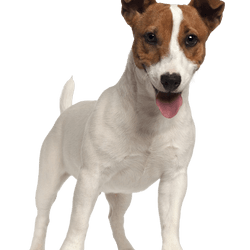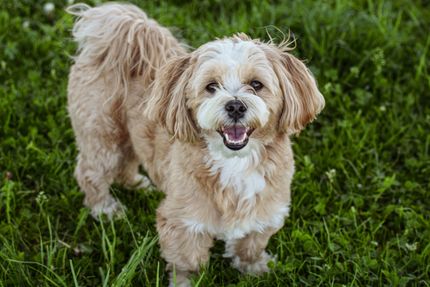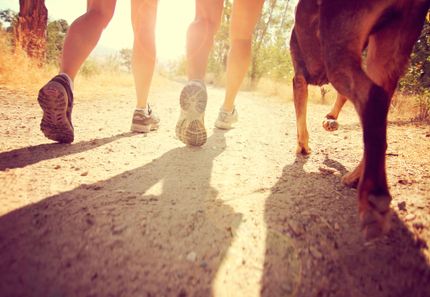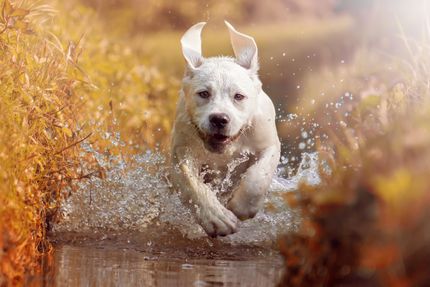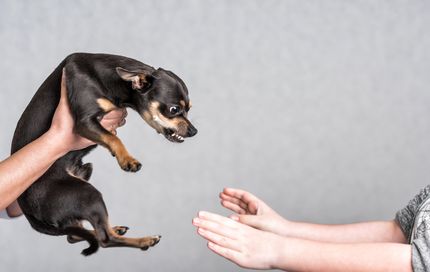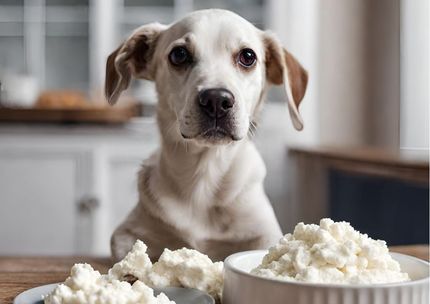Facts & Origin
Beagle and Jack Russell Terrier in one
The Jack-A-Bee is a hybrid breed created by crossing a Jack Russell Terrier with a Beagle. The aim of this mixture was to combine the intelligence, energy and hunting instinct of the Jack Russell with the friendly nature and sniffer nose of the Beagle - in a lively, family-friendly dog that loves to move.
Breeding of the Jack-A-Bee probably began in the USA, when designer dogs with deliberately combined characteristics became increasingly popular. Both parents originally came from hunting dog breeding, which means that the Jack-A-Bee is also often a very active and hard-working mixed breed.
Criticism of the Jack-A-Bee
As with many mixed breeds, there is also criticism of the Jack-A-Bee, particularly with regard to breeding standards, health and expectations. As the Jack-A-Bee is not recognized as an official breed, there are no uniform standards for size, temperament or health requirements. The offspring can differ greatly depending on their genetic disposition.
A common misconception is that mixed breeds are automatically more robust or easier to care for. However, both parents have characteristics that should not be underestimated: a high hunting instinct, stubbornness and the need for mental and physical exercise. If these needs are not met, the Jack-A-Bee can quickly appear underchallenged or untrained - which is wrongly interpreted as "difficult".
Another point of criticism is that many Jack-A-Bees come from unplanned or poorly controlled matings, which can increase the risk of hereditary diseases or behavioral problems.
Suitability of the Jack-A-Bee
The Jack-A-Bee is an energetic, smart and loving companion dog that is ideal for active people or families, provided they are well socialized and kept appropriately. He loves exercise, play and nose work - and needs both physical exercise and mental challenges every day.
Due to the Beagle part, the Jack-A-Bee often shows a friendly, good-natured nature, while the Jack Russell provides temperament, self-confidence and courage. This mixture makes it a dog with a lot of character and a strong will - which is why consistent training and clear rules are important.
The Jack-A-Bee is particularly suitable for:
Sporty owners
Active families with older children
People with an interest in dog sports, agility or tracking
Anyone who is prepared to deal with an intelligent but sometimes stubborn dog
However, the Jack-A-Bee is not suitable for people with little time or desire for exercise, as it can otherwise quickly display behavioral problems - due to boredom or lack of challenge.
| Alternate Name | Jackabee, Jack Russell Beagle Mix |
| Origin | UK - England |
| Life expectancy | 10 - 16 years |
| Care requirements | low-maintenance |
| Activity level | average - high |
| FCI group | not recognised |
| AKC group | not recognised |
| KC group | not recognised |
More Beagle mixes
More Jack Russell Terrier mixes
Attitude, character and temperament of the breed
Possible character traits of the Jack-A-Bee
The Jack-A-Bee is generally a lively, smart and friendly dog with lots of energy and curiosity. It often combines the playfulness, determination and intelligence of the Jack Russell Terrier with the good-natured, gentle and social nature of the Beagle. This combination makes him an active and attentive companion who is both people-oriented and affectionate.
Typical of the Jack-A-Bee is his pronounced sniffer nose - thanks to the Beagle genes - as well as his temperament and stubbornness, which are characteristic of terriers. He loves to sniff, explore and play. Many Jack-A-Bees are also child-friendly and get on well with other dogs if they have been socialized early on.
At the same time, the Jack-A-Bee can be headstrong or stubborn - especially if he is bored or feels underchallenged. Therefore, clear, loving training is just as important as a structured daily routine with sufficient exercise and mental activity.
Character
Usage
Possible diseases of the Jack-A-Bee
As a mixed breed, the Jack-A-Bee can inherit both health benefits and risks from both parents. Responsible breeding, in which both parents have been health tested, is therefore essential.
Possible diseases in the Jack-A-Bee:
Ear infections, as the Beagle's proportion results in drooping ears that are less well ventilated
Patellar luxation (dislocation of the kneecap), common in small to medium-sized dogs
Eye diseases, e.g. cataracts or progressive retinal atrophy (PRA)
Epilepsy, especially if genetic
Obesity, if the dog gets too little exercise and too many treats (beagle proportion!)
Allergies or skin problems
Regular veterinary check-ups, a balanced diet, plenty of exercise and careful care of the ears and teeth help to keep your Jack-A-Bee healthy.
This is what a Jack-A-Bee can look like
As the Jack-A-Bee is a mixed breed, its appearance varies - but it is usually somewhere between a Jack Russell and a Beagle in terms of size and build. As a rule, it is medium-sized, around 25 to 38 cm high and weighs between 7 and 13 kilograms.
It often has a compact, athletic body, with strong legs and a lively expression. The ears are often half drooping or sticking out to the side, the eyes are large, round and friendly. The tail is usually of medium length and carried upright.
The coat is short to medium-long, smooth and easy to groom. The most common coat colors are white, brown, black, tricolor or spotted - often with typical Beagle markings or terrier patterns.
Overall, the Jack-A-Bee looks like a bright, compact all-rounder who quickly wins hearts with both his appearance and his character - provided you know how to deal with his energy.
| Fur length | short |
| Fur | flat coated - rough-haired |
| Ear shape | Floppy Ear - Tilt-ear |
| Tail | lang |
| Anatomy | rugged, sporty |
| Size ♀ | 25 - 38 cm |
| Weight ♀ | 6 - 10 kg |
| Size ♂ | 25 - 41 cm |
| Weight ♂ | 6 - 11 kg |
| Suitable For | - |
Known Diseases
Hypothyroidism
Hypothyroidism is a condition in dogs where the thyroid gland does not produce enough thyroid hormones. This can lead to a slowed metabolic rate, weight gain, fatigue, hair loss and other symptoms.
Epilepsy
Definition: Dog has epilepsy if, for example, at least two epileptic seizures occur more than 24 hours apart.
Eye diseases
Often occur with allergies and intolerances.
Overweight
Often, unfortunately, the dogs very much under excess weight. But the dogs themselves are never to blame!
Disc problems
Herniated disc in dogs (discopathy). Herniated discs or dachshund paralysis cause dogs severe pain.
Cataract
Cataracts are still one of the most common causes of blindness, even in dogs.
Numbness
Often occurs in old age.
Ataxia
Ataxia (from Greek ἀταξία ataxia 'disorder' 'irregularity') is a generic term in medicine for various disorders of movement coordination. Ataxia can occur even when there is no paralysis (paresis), that is, when there is normal muscle strength.
Atopy
Canine atopic dermatitis or environmental allergy is characterized by itching with scratching, biting, and rubbing of the face, paws, and belly
Dermatophytosis
Dermatophytosis (synonym dermatophytosis, from ancient Greek τὸ δέρμα derma, German 'skin' and ancient Greek φυτόν phyton, German 'plant') or tinea (Latin for 'woodworm', 'moth') is a skin fungal disease caused by specific fungi (dermatophytes).
extreme whiteness
May be associated with some other diseases.
Legg-Calve-Perthes
Legg-Calvé-Perthes disease (aseptic femoral head necrosis) is a growth disorder of the femoral head.
Dislocations
Lenticular and patella luxation occur in some breeds and affect the eye.
Myelopathy
Degenerative myelopathies of dogs are a series of slowly progressing neurological diseases associated with destruction of the spinal cord. These diseases are associated with slowly progressive movement disorders of the hindquarters.
FAQ
-
A Jack-A-Bee typically has the appearance of a small to medium-sized dog with a short, smooth coat. The coat can be solid-colored, but is often tricolored (black, white and brown). The head is typically proportionate to the body, with floppy ears and a long, narrow muzzle.
-
Beagle and Jack Russell Terrier mixes are generally active, friendly and intelligent dogs. They can inherit some of the hunting instincts of the Beagle, so they may enjoy activities such as tracking or retrieving. However, they can also inherit the independence and stubbornness of the Jack Russell Terrier, which is why training and socialization are important from an early age.
-
Beagle and Jack Russell Terrier mixes usually weigh between 9 and 11 kg and have a shoulder height of 33 to 43 cm.
-
Beagle and Jack Russell Terrier mixes should be brushed regularly with a soft bristle brush to remove loose hair. They should also be bathed with a mild dog shampoo as required. Nails should be trimmed regularly and teeth should be brushed daily with a dog toothpaste.
-
Jack-A-Bees are generally good with children, although they have inherited the Beagle's hunting instinct, so they may chase smaller pets or children if not properly trained and socialized.

